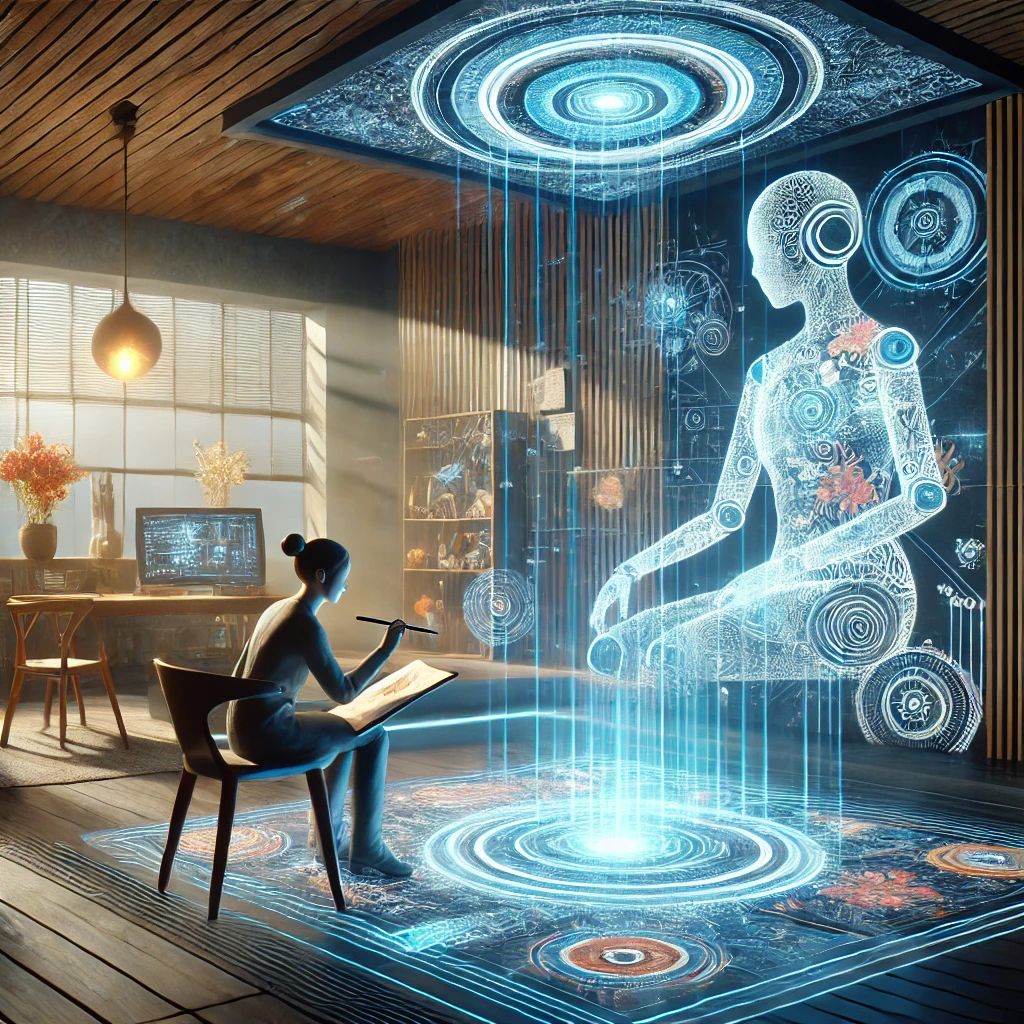
Imagine walking into a room where the walls seem to speak to your soul, the furniture whispers comfort, and every detail tells a story. This is the magic that a talented interior designer can create—a blend of art, intuition, and a deep understanding of human emotions. But what if a machine could do the same? Could AI, with all its computational power, step into the shoes of an interior designer and craft spaces that resonate with us on a deeply personal level?
This question is more than just hypothetical. As technology advances, AI is increasingly finding its way into the world of interior design. From generating design layouts to creating virtual mood boards, AI promises to make the design process faster, more efficient, and even more affordable. But can it truly replace the nuanced expertise and creativity of human designers? Let’s delve into this evolving landscape.
The Rise of AI in Interior Design: A New Kind of Partner
The buzz around AI in interior design isn’t just a passing trend. It’s reshaping how designers approach their work, offering tools that streamline tasks and open up new possibilities. Take, for example, the rise of platforms like Modsy and Havenly. These services use AI to create design layouts based on user inputs, offering clients a glimpse into the potential transformation of their spaces without stepping out of their homes.
Picture this: You’re sitting on your couch, and with just a few clicks, you upload photos of your living room. In minutes, AI generates a 3D rendering that shows you how your space could look with different furniture, colors, and layouts. It’s like having a designer in your pocket, ready to offer suggestions at any time of day.
The Perks: Speed, Savings, and Smarts
AI brings some undeniable advantages to the table. For one, it’s incredibly efficient. It can sift through vast amounts of data and churn out design ideas in a fraction of the time it would take a human. This means faster turnaround times for clients who are eager to see results.
And then there’s the cost factor. By automating routine tasks, AI can make interior design more accessible to a wider audience. It can generate a variety of design options within a set budget, giving clients more choices without the need for extensive manual input.
AI’s ability to harness data is another game-changer. By analyzing trends and user preferences, it can predict what’s going to be popular and tailor designs to meet those expectations. This data-driven approach ensures that the designs are not just aesthetically pleasing but also in line with what people are looking for.
Perhaps one of the most exciting developments is AI’s ability to create virtual visualizations. Imagine walking through a fully designed room that doesn’t yet exist—AI makes it possible with stunningly realistic 3D renderings and virtual tours. This not only helps clients visualize the final result but also reduces the risk of disappointment.
The Drawbacks: What AI Can’t Do
However, as promising as AI might seem, it has its limitations. The most glaring is its lack of a human touch. Interior design isn’t just about putting together a pretty room; it’s about understanding a client’s lifestyle, preferences, and emotional needs—areas where human designers truly shine.
Think about the last time you worked with a designer. The conversation wasn’t just about colors and fabrics; it was about how you live, what makes you feel comfortable, and what kind of atmosphere you want to create. This emotional connection is something AI struggles to replicate.
Creativity is another domain where human designers have the upper hand. While AI can generate designs based on existing patterns, it often lacks the ability to think outside the box. Human designers bring innovation, creativity, and a unique perspective to their work, creating designs that are as much a reflection of their own artistic vision as they are of the client’s needs.
Let’s not forget the emotional and cultural nuances that play a significant role in design. AI might be good at predicting trends, but it struggles with the subtleties of personal style, cultural references, and historical influences that human designers seamlessly incorporate into their work.
Looking Ahead: A Future of Collaboration

So, where does this leave us? Rather than replacing interior designers, AI is more likely to become a powerful ally in the design process. The future of interior design might see AI handling repetitive tasks, data analysis, and preliminary design ideas, while human designers focus on the creative, emotional, and intricate aspects of their work.
Imagine a world where designers use AI to handle the technical side of things, freeing them up to explore new ideas and push creative boundaries. It’s a future where technology and artistry come together, each enhancing the other’s strengths.
Conclusion: The Heart of Design
In the end, interior design is about more than just creating a space—it’s about creating a home, a sanctuary, a reflection of who we are. AI might be able to assist in this process, offering tools that make design more efficient and data-driven. But it’s the human touch, the ability to understand, empathize, and connect, that will always be at the heart of truly great design. As AI continues to evolve, the best designs will come from a collaboration between technology and human creativity, ensuring that our spaces are not just beautiful, but deeply meaningful

Accept the changes
Change will accept you
There are always pros and cons
But one can benefit in every situation
Learn and grow for better in every challenge
Thank you for your thoughtful comment! You’re absolutely right—embracing change allows us to learn and grow, regardless of the challenges. I appreciate your perspective!